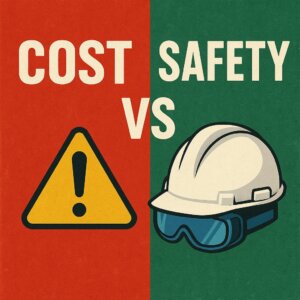In modern workplaces, personal protective equipment (PPE) is not only about safety but also about comfort and efficiency. Wearing traditional, heavy PPE for long periods can cause fatigue, muscle strain, and even reduce operational precision. Lightweight PPE is designed to address these issues, offering clear advantages.
1. Reduce Physical Strain and Improve Comfort
Lightweight PPE uses lighter materials and optimized structural designs to significantly reduce overall weight. For workers wearing PPE for long shifts, shoulder, back, and arm strain is minimized, reducing fatigue, especially in roles requiring long periods of standing or frequent movement.
2. Enhance Efficiency and Mobility
Lightweight, well-fitted PPE allows workers to move more freely. This improved mobility not only reduces safety risks associated with restricted movement but also enhances overall work efficiency.
3. Minimize Occupational Health Issues
Long-term use of heavy PPE can lead to chronic muscle soreness, joint stress, or even occupational diseases. Lightweight designs help alleviate these problems, protecting workers’ health while maintaining safety standards.
4. Innovative Materials and Technology
Modern lightweight PPE combines advanced fibers, composite materials, and ergonomic designs. Breathable protective clothing, shock-absorbing helmets, and ergonomically designed gloves exemplify how lightweight design can coexist with high functionality.
Conclusion
Lightweight PPE makes safety more comfortable while safeguarding health and productivity over long periods of use. Choosing lightweight, high-performance PPE is a practical investment in both employee safety and well-being.








